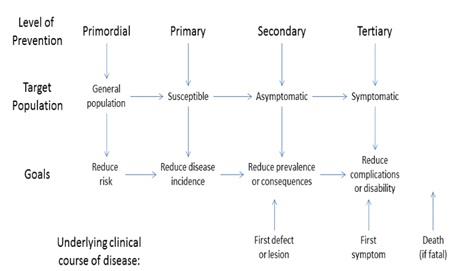Strategies of Health Promotion and Societal Awareness
SAVE TOP GRADE USING STRATEGIES OF HEALTH PROMOTION AND SOCIETAL AWARENESS ASSIGNMENT HELP SERVICE OF EXPERTSMINDS.COM
Question 1) A PPT made by Krames Staywell (attached)(a company that produces educational material for medical practices to provide to patients). It''s a nice overview of concepts with some practical application as well. What information do you find most helpful in your professional role?
Patient education is one of the most critical factor associated with the clinical treatment processes, by which the health outcomes of patients could be improved. On the other hand, patient education can ensure the values of the treatment service delivered by the practitioners, which is essential in case of retaining their satisfaction level. Through assessing the presentation, I think that the most valuable part is the four steps relevant with education along with the description of the processes. This step-by-step educational process is beneficial for me in understanding what would be the requirements and expectations of patients, based on which I would develop some proper care plans or strategies for delivering the best care services to them.
For example, during the first step of assessment in patient education, I need to focus on ‘grasping patient concerns' and ‘asking right questions' along with proper evaluation. After that, during the second step of planning, I would focus on effective plan building, according to the SMART goals developed, according to the first step. Implementation of the reassessed plans would be performed in the last third step, along with evaluating the strategies by overcoming the raised challenges. The last step in patient education is documentation; I think this step is required to perform with proper concentration, as all of the documents would be used for improving the future healthcare services.
Question 2) Compare and contrast the three different levels of health promotion (primary, secondary, tertiary). Discuss how the levels of prevention help determine educational needs for a patient.
The preventive health actions taken by government and healthcare organisations can be divided into three levels, which are termed as primary, secondary, and tertiary preventive care. These preventive levels are developed as the integrated part of the Essential Public Health Operation or EPHO, for preventing the prevalence rate of various life-threatening diseases (EPHO5: Disease prevention, including early detection of illness, 2018). However, there are certain differences in these three preventive levels, which could influence the patient education process also, as the educational requirements of patients vary in each level.
For example, in the ‘Primary level', it is aimed to reduce the possibility of injury diseases by eliminating their root causes. It could be achieved through incorporation of good health habits, reduction of unhealthy substance usage, and promotion of positive factors for protecting health (Toddet al. 2017). Therefore, clinical practitioners need to focus on the common educational processes rather than individual planning, such as enforcing legislation for hazardous product control, educating people about safe health practices, delivering knowledge about improvement of self-immunisation power.

Figure 1: Classification of Preventive Strategies
GET ASSURED A++ GRADE IN EACH STRATEGIES OF HEALTH PROMOTION AND SOCIETAL AWARENESS ASSIGNMENT ORDER - ORDER FOR ORIGINALLY WRITTEN SOLUTIONS!
On the other hand, the ‘Secondary level' is required for measuring the early phases of diseases or injuries. In this secondary health promotion and prevention level, the clinical practitioners mainly provide their focus on the detection and treatment of the life-threatening diseases, in order to lowering its progress rate. Besides this, encouraging personal prevention strategies, preventing recurrences, and implementing different programmes for supporting people in regaining their health, is also parts of this secondary level. Therefore, unlike to the primary level, here the educational requirements change to regular screening and assessments for disease detection, planning of diet or exercise practices for further progress prevention, and improving health and safety measurement standards (Health promotion across all stages of wellness and disease, 2018).
Apart from the two above, in ‘Tertiary level' of disease prevention, it is aimed to decrease or minimise the adversities associated with various already-established diseases as well as with the ongoing illness. Besides this, tertiary prevention is also required for managing the health issues having long-term and complex effects on people heath, for supporting them in regaining their lives' quality along the higher life expectancy level. Therefore, Eldredgeet al. (2016) stated that the education requires in this phase would be a certain higher level compared to the previous two levels, such as arrangement of educational programmes on stroke rehabilitation, vocal rehabilitation, or chronic disease management, by supporting the group education planning.
Question 3) How are the challenges faced by families formed by second marriages similar to and different from challenges faced by families formed with first marriages?
It is evident that marriage is the most common and traditional process associated with the human society, which can be defined as an emotional and spiritual reunion rather than being just a physical one. However, like any other societal transitions, marriage also has its own benefits and disadvantages as well. In case of first marriage, people often feel stuck in the scheduled process of lives, along with their formal societal duties towards their husband or wife and in-laws. Besides this, it is proved that people generally loss their freedom after marriage.
However, unlike the first marriage, second marriage is more stressful. In case of divorce and re-marriage, people could not get proper supports from their family members; therefore, they become lonely overall. Children belong from the first marriage become disturbed due to the difficult transitional phases. Both mental and physical stress factors increase, due to the reason of partner separation, children separation, and financial burden. On the other hand, the couples following re-marriage might face various political and legal issues, which can cause obstacles in developing their marital lives. Therefore, it can be stated that people doing second marriage might experience different types of challenges compared to the first marriage.
HIRE PROFESSIONAL WRITER FROM EXPERTSMINDS.COM AND GET BEST QUALITY STRATEGIES OF HEALTH PROMOTION AND SOCIETAL AWARENESS ASSIGNMENT HELP AND HOMEWORK WRITING SERVICES!